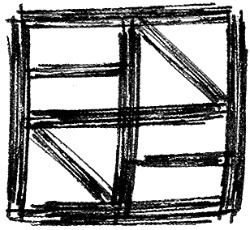Anna Tas
I was born and brought up in Kent, the South Eastern bit of the United Kingdom squished between London and Europe. As with anyone, I have been influenced by my upbringing, my culture and personal experience. I think a certain island mentality is ingrained deeply in my bones, this sense of being part of something yet apart from it at the same time, is something I feel very strongly in my life. As a child I loved the anarchic stories by Roald Dahl, and later was drawn to things like Monty Python - ridiculous, edgy, and comically brilliant. There is that “gallows” humour which the British are known for – in the face of death we’re defiant to the point of madness, as someone once so eloquently put it, and my realisation of our mortality (which occurred to me for no specific reason at 4 years old) combined with this dark sense of humour and my constant questioning, have underpinned everything I do.
My work has been described as conceptual yet compelling, allowing the audience to interpret what they see in their own way, as well as stimulating discussion about how we see and how images persist in our minds. I am fascinated by the physical interaction the viewer has with a lenticular piece, the way it changes with their movement and angle of viewing – it provides an initial moment of surprise, and then an extended period of contemplation. A literal and figurative ‘back and forth’! I really enjoy the dialogue that comes from a viewer who is seeing the work from their own perspective, rather than mine, someone who has no preconceived idea of what it is that I am trying to talk about.
I have no answers, no judgment, just questions. I am drawn to looking at why we think what we think, how we develop and learn to decode what we see and assign certain values (for want of a better word) without being really conscious that this is what we do. I am part of something, yet also apart from it – observing, watching, questioning, and wondering. Why? What? How?
There are several common threads that run through my images – often subtle in their own way, and this is something that appeals to me very much. I like the fact that there is ambiguity in the meaning, which allows it to work on different levels for different people. In my opinion, how we interpret what we see is just as much a reflection on ourselves and our situations, as it is of the work itself. I don’t think we can help it.
PDF brochure, with essay by Sabrina DeTurk, Ph.D, Assitant Professor, College of Arts and Creative Enterprises, Zayed University, Dubai, UAE.
